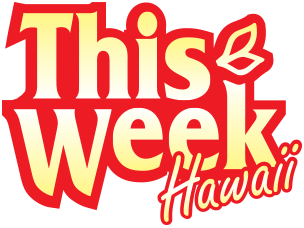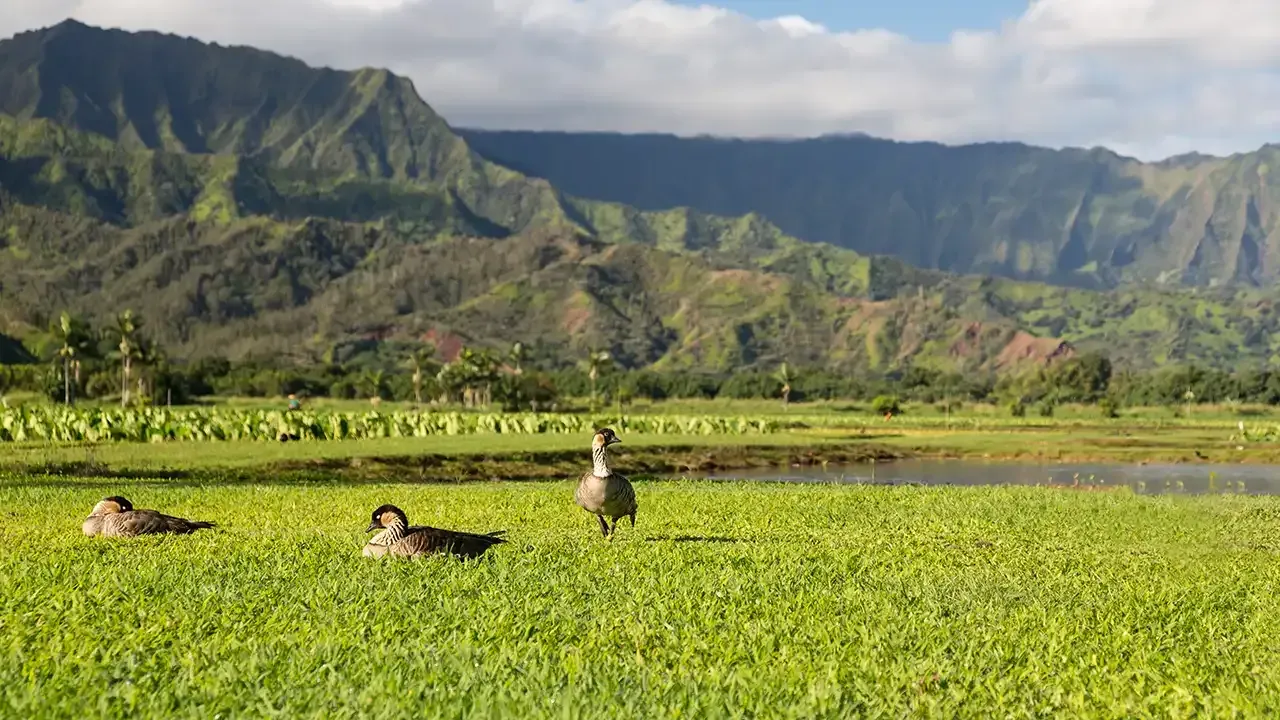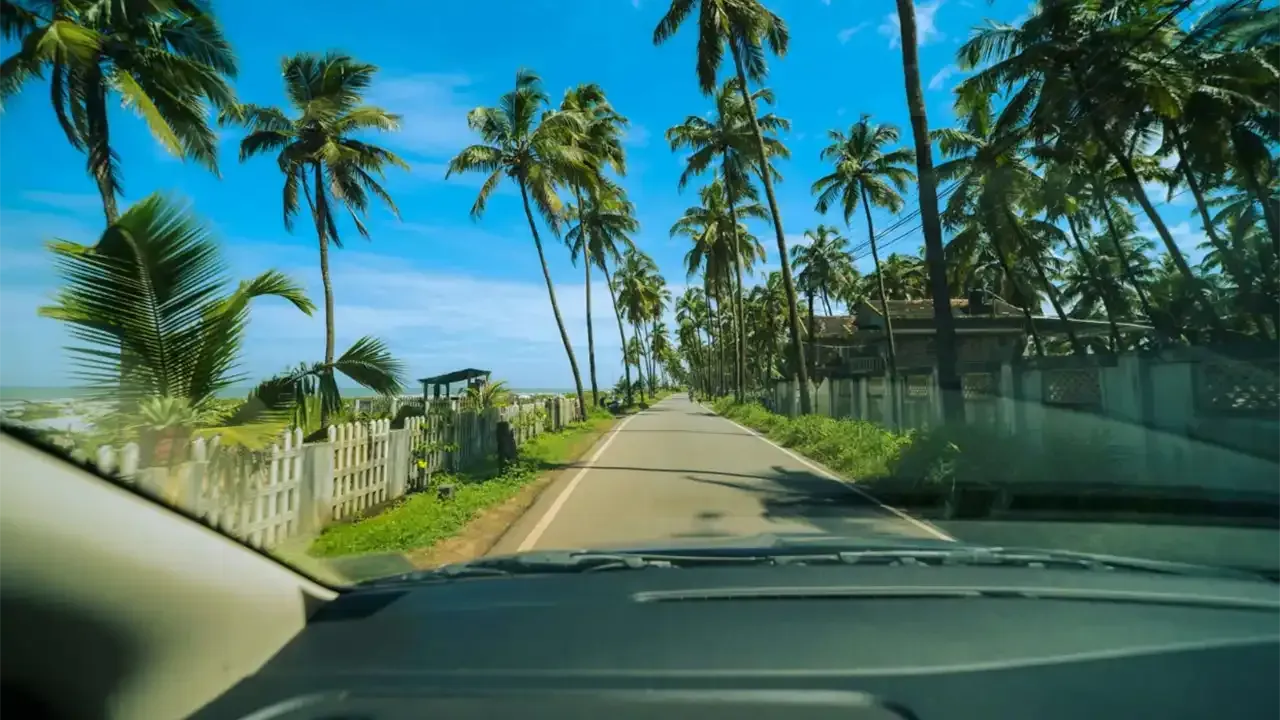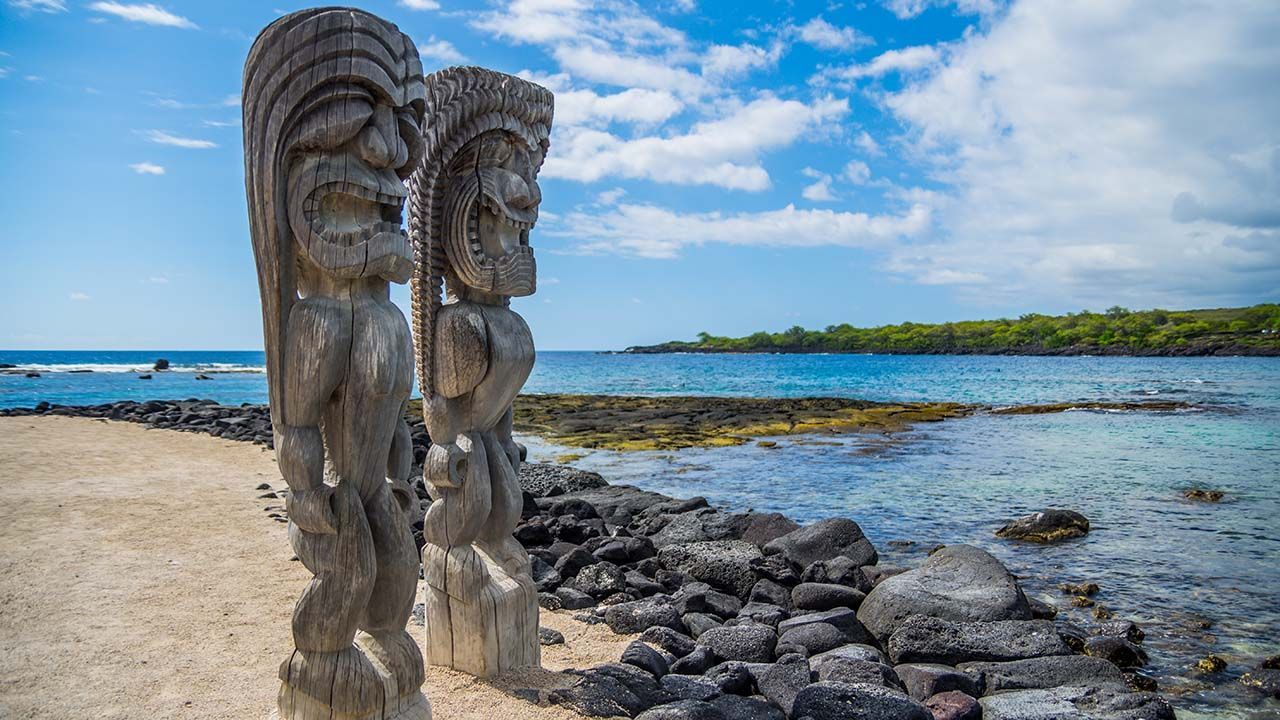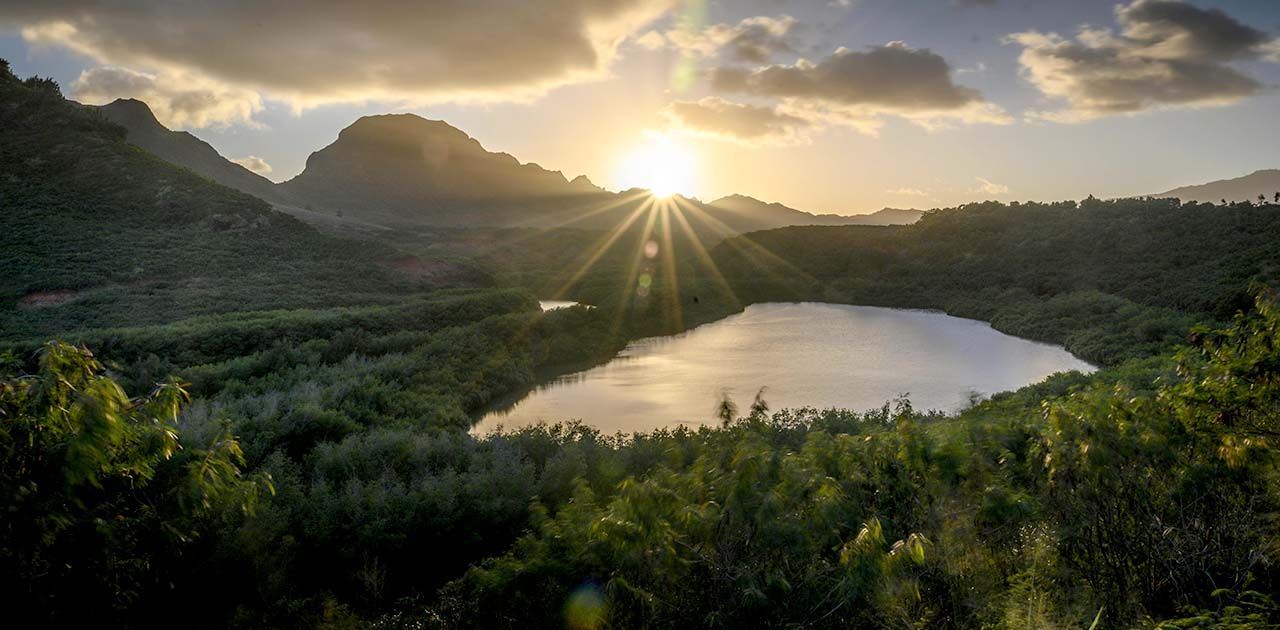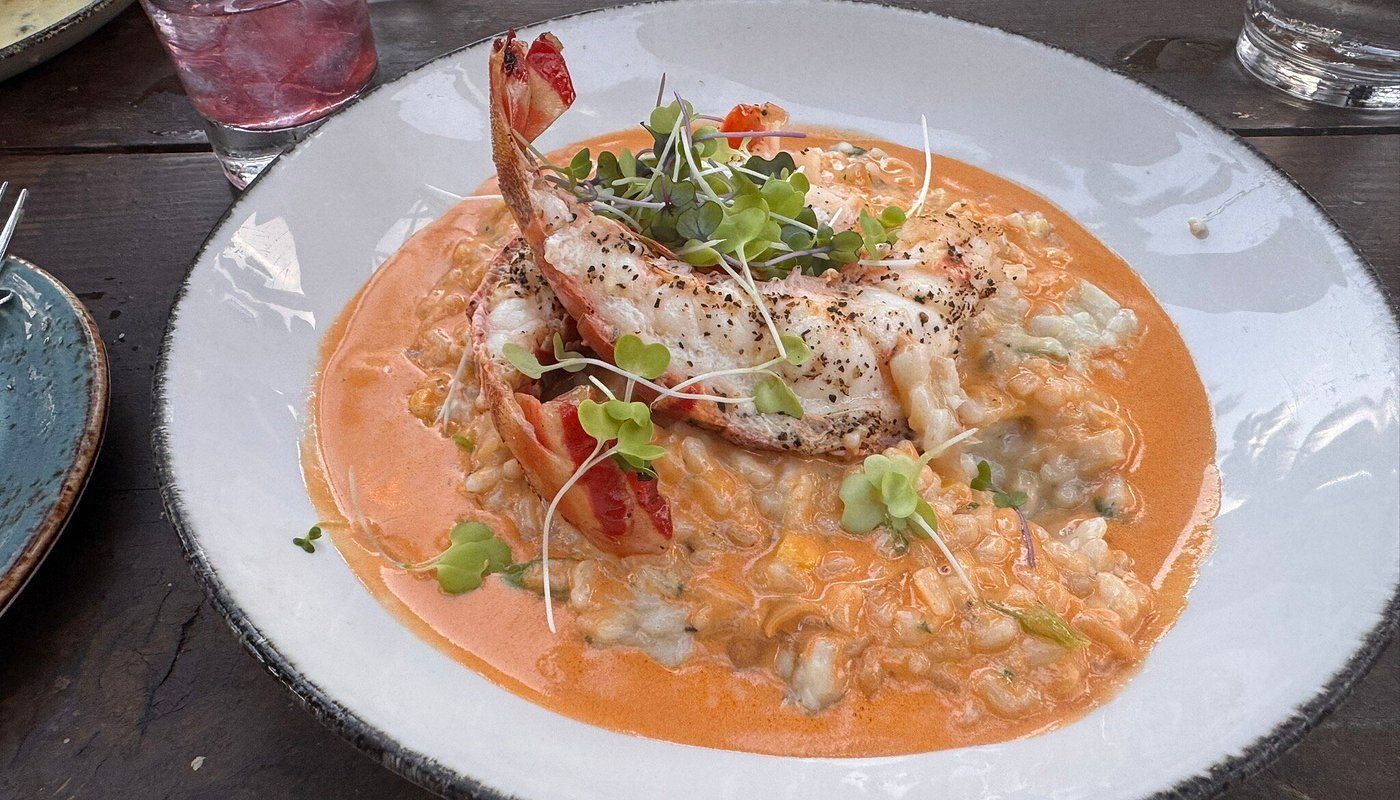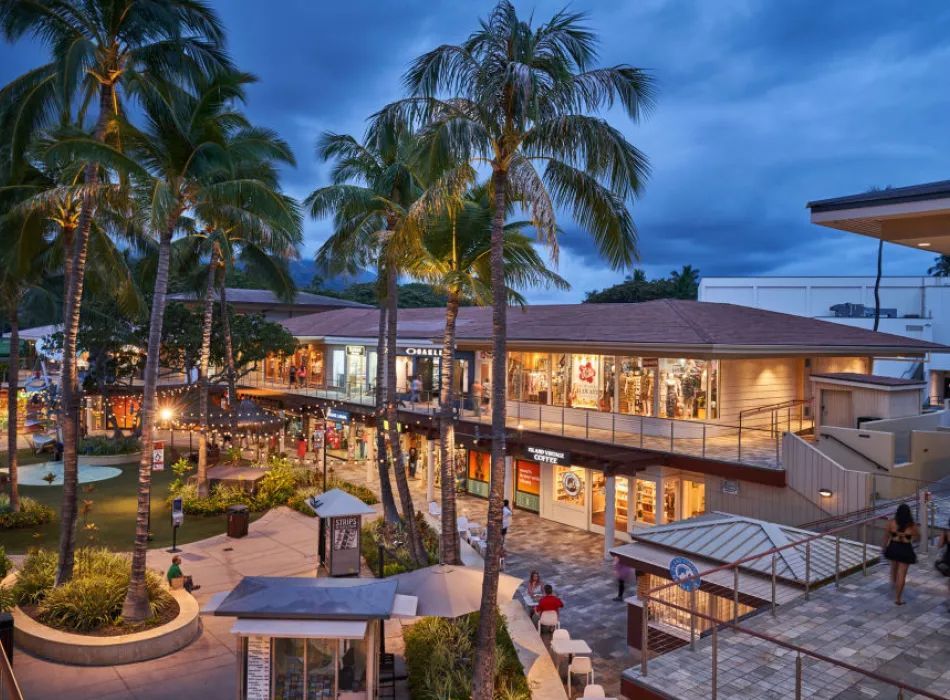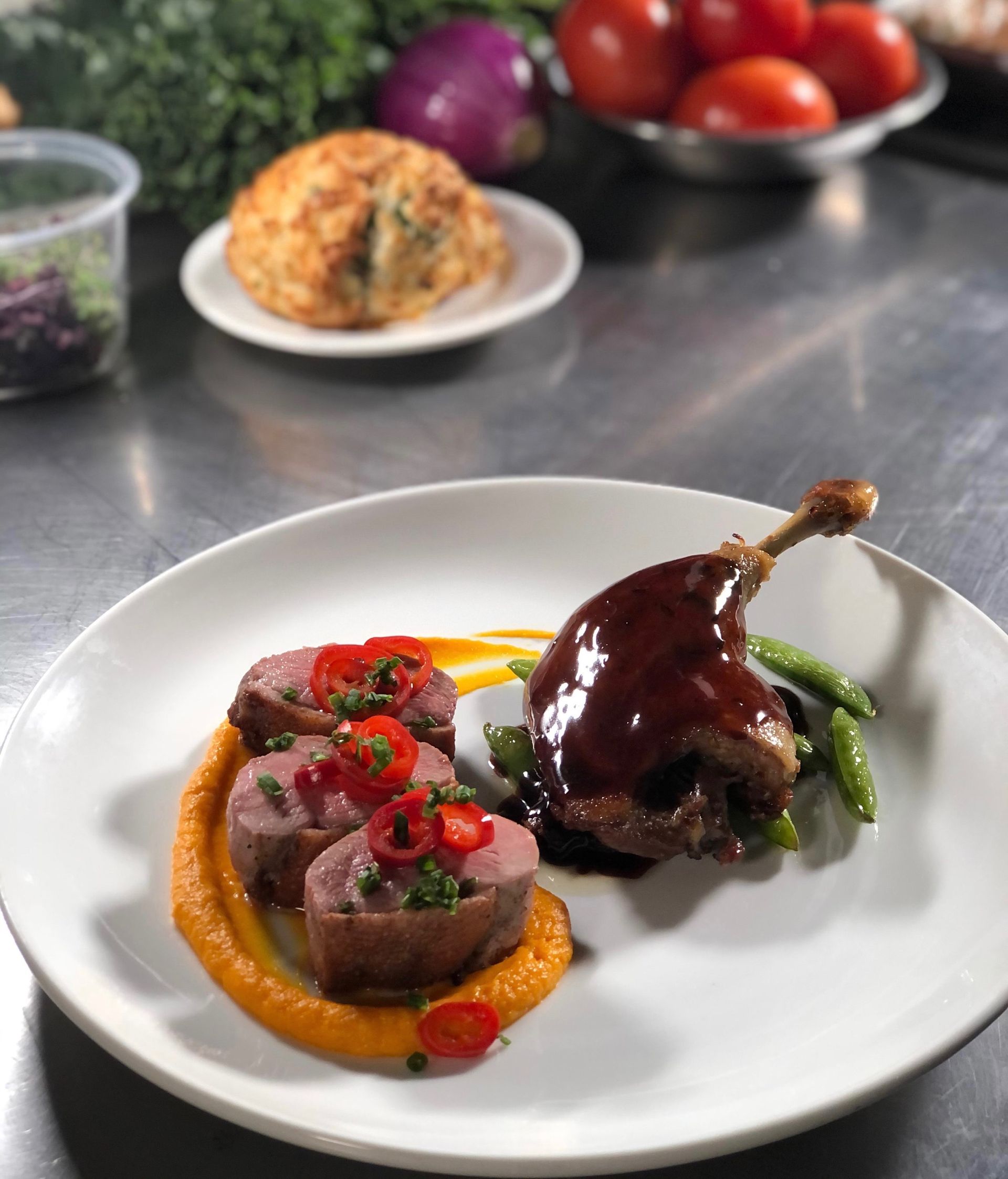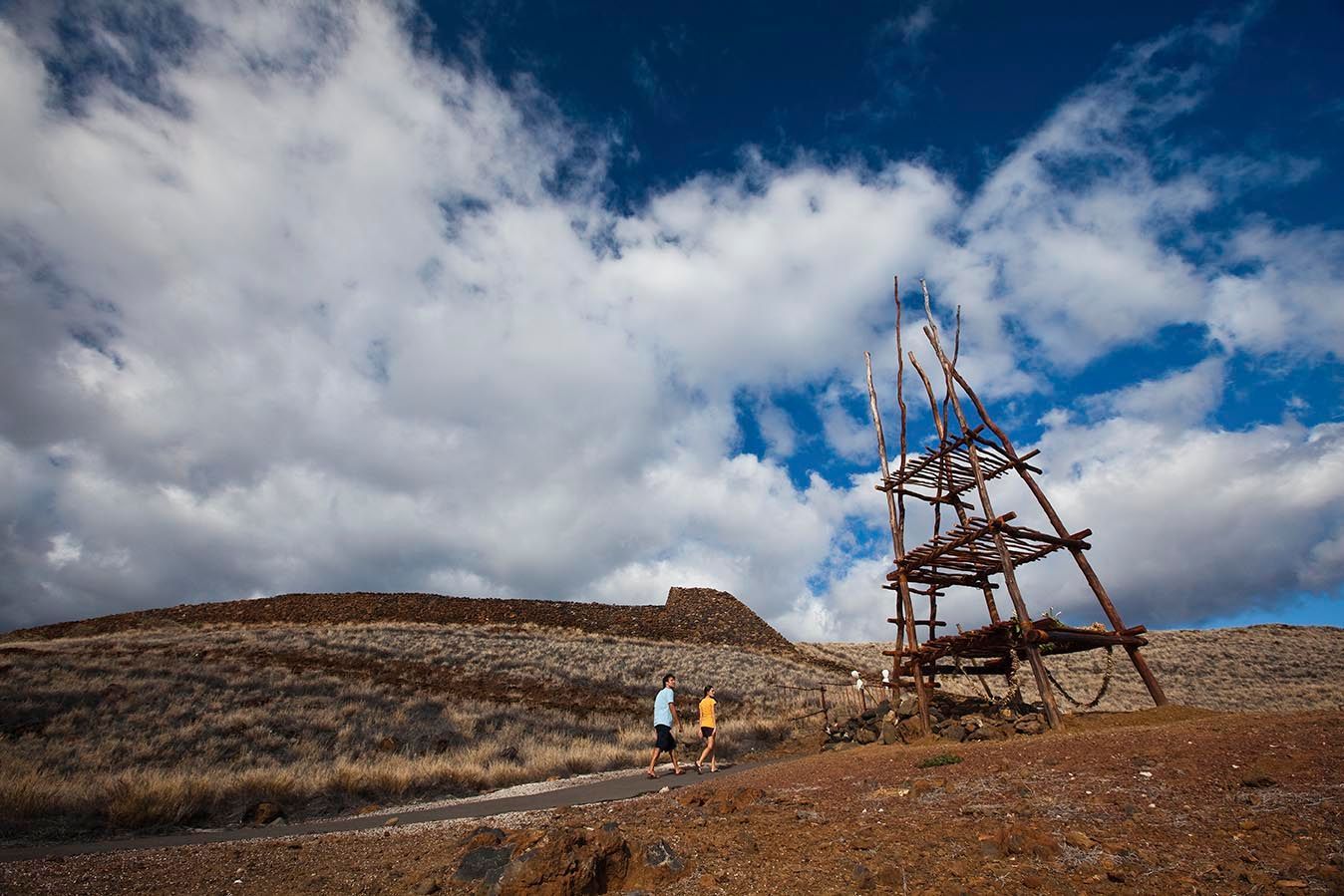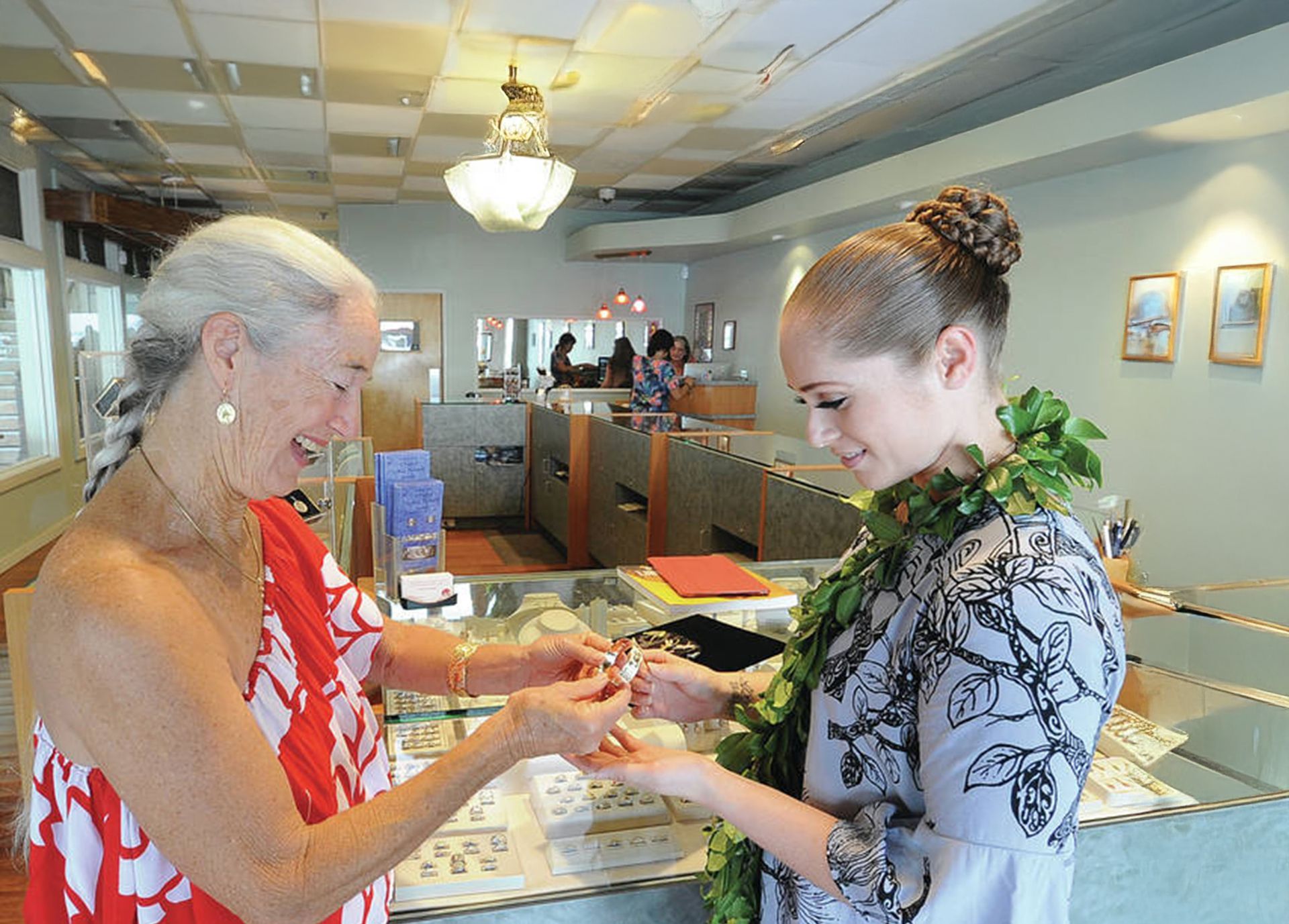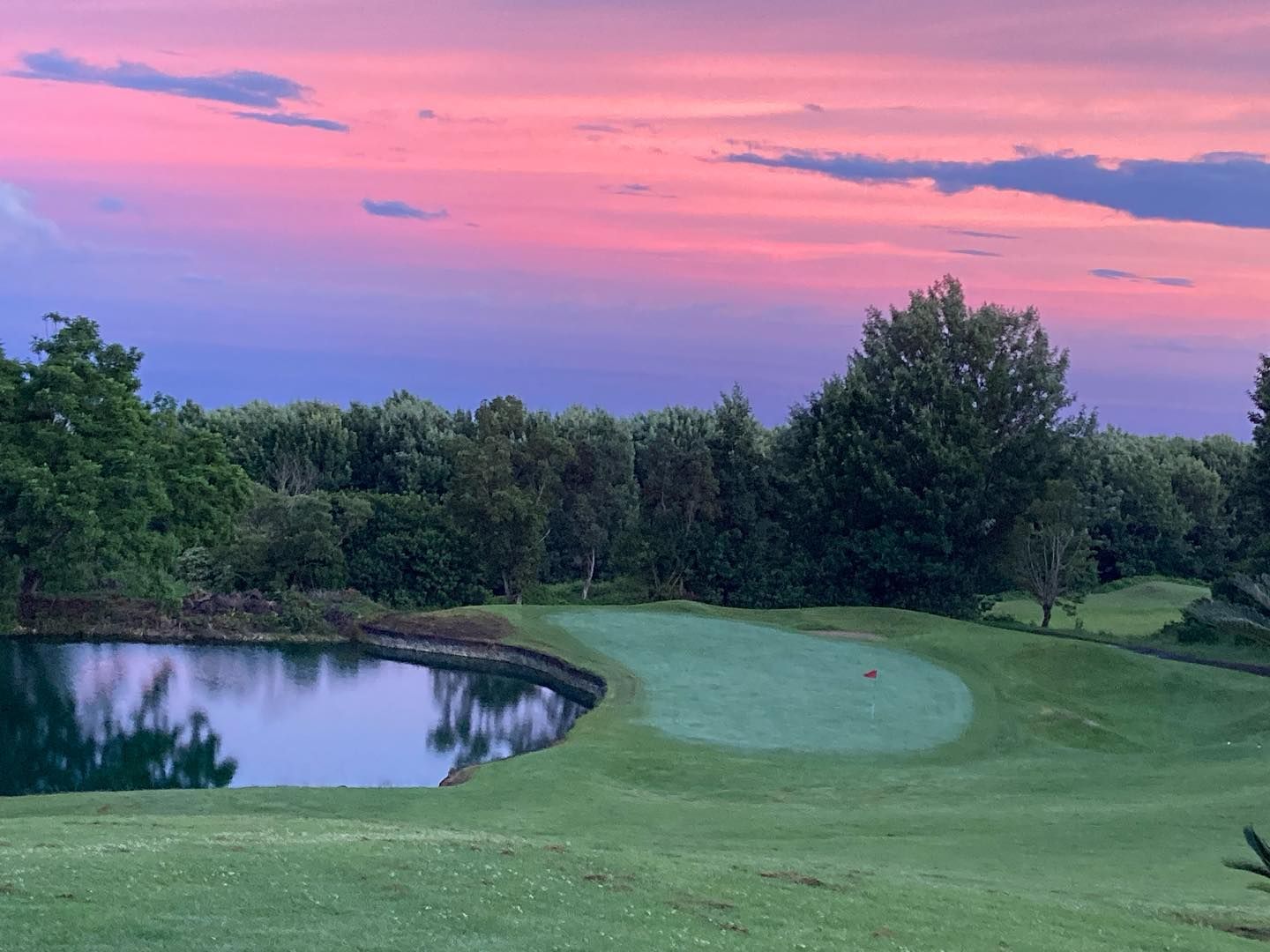Best Time to Visit Hawaii: Weather Guide & What to Know
Aloha, travelers! Planning your first big ʻOhana vacation or craving a return to the Islands? Wondering when the sweet spot of weather, smaller crowds, and good deals comes around? Well, you're in luck.
As locals, we'll break it all down, from kau wela (summer) to hoʻoilo (winter), plus shoulder seasons and what the leeward vs. windward sides mean for your trip.
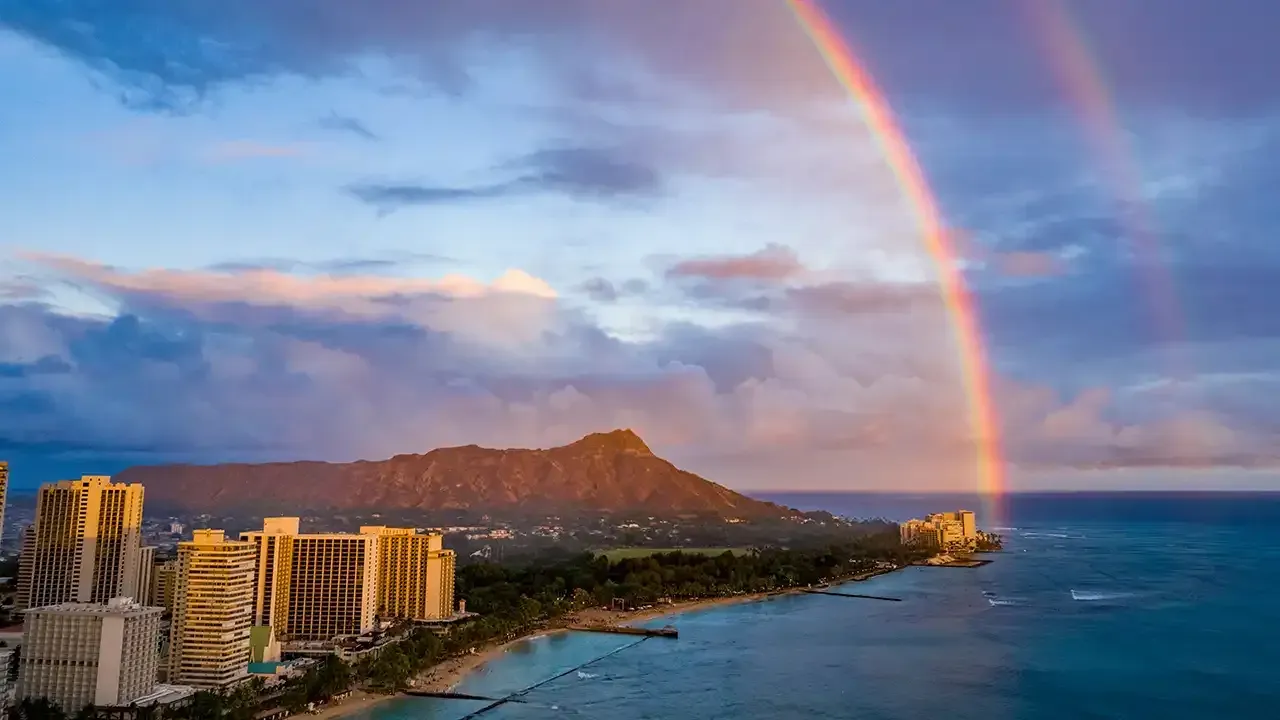
The Two Seasons: Kau Wela (summer) & Hoʻoilo (winter)
In the Islands, we basically talk about two seasons: Summer (kau wela) and Winter (hoʻoilo)—but no four‑season drama here, just sunshine, showers, and trade winds.
Kau Wela (Summer): May through October
This is our dry season, characterized by warm temperatures (mid-80s°F during the day, low 70s°F at night), consistent trade winds, and minimal rainfall on leeward coasts. Perfect for beach days, snorkeling, surfing, or hiking without getting soggy.
Hoʻoilo (Winter): November through April
Expect a few heavier showers, especially in December through March, when Kona storms roll through and the windward sides of the islands cloud over more frequently. Temperatures remain pleasant, typically in the low 80s°F, with nighttime lows ranging from the mid-60s to the low 70s°F.
Even in winter, it doesn't snow except at high elevations like Mauna Kea—but those mountain snow‑capped views from the beach? Totally magical.
Shoulder Seasons: When Locals Say "Perfect"
For islanders and savvy visitors, the shoulder seasons—April–May and September–October (sometimes early November)—are the sweet spot.
- Spring (April & May): Trade winds kick in, raindrops fade, ocean temps warm up (mid‑70s °F to low‑80s °F), skies are mostly blue, and the landscape blooms. Just after spring break, crowds are thinner, resulting = smoother traffic for the Road to Hana, Ho'omaluhia Garden, or Diamond Head hikes.
- Fall (September to October/early November): After Labor Day, visitor numbers drop, hotel and flight rates dip, and local businesses enjoy smoother days. The water stays warm from the summer heat; conditions are mellow, with good visibility for snorkeling and surfing.
Best month overall? Many experts and locals pick September—it's still dry, warm, less crowded, and prices are more friendly.
When to Avoid (If You Can)
- Peak Summer (June–August): School vacations make the Islands bustling. Expect summer scheduling, crowded beaches and hikes, and high rates for lodging and Hawaiian flights.
- Holiday Season (Mid‑December through early January): Expect full hotels, expensive flights, traffic congestion, and long lines at restaurants. Not that it's a bad time; just intense.
- Winter Rainy Spells (December–March): The trade winds slacken, Kona lows bring heavier rains (especially on the windward side), and ocean conditions on the windy north shores may be rough. Still, the rain is usually intermittent.
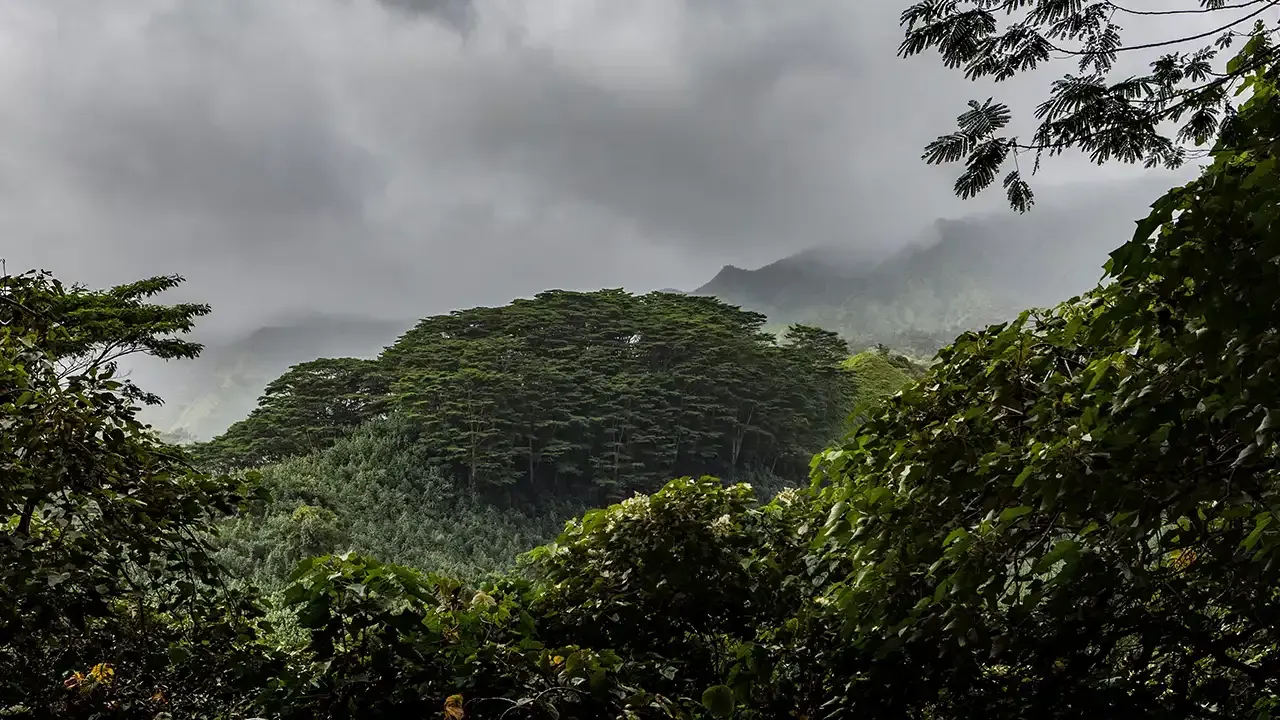
Rain, Trade Winds & Micro‑Climate Matters
Trade winds—those consistent breezes from the east—are our blessing. From May to September, they blow about 80‑95% of days, keeping things cool and dry on leeward shores. In winter, winds shift and rainfall increases—particularly on windward sides and at higher elevations.
Know your side:
- Leeward (Kona) sides—think Waikiki, Kāʻanapali, Kona coast—sunnier and drier year‑round.
- Windward (Koʻolau) sides—like Hilo, Hana, north shore Kaua'i—lush, sometimes wetter, cooler, but absolutely stunning.
Honolulu average rainfall:
- June = driest (~0.3–0.4 inches)
- December is the wettest month (~2.2–2.9 inches).
Worst heavy showers usually pass by midday; chances are high you'll still get plenty of sunshine before or after.
Temperature & Ocean Conditions by Month
Air Temperature
- Summer highs: mid‑ to upper‑80s °F, lows in the low 70s °F.
- Winter highs: low to mid‑80s °F, lows mid‑60s to low 70s °F
Sea Temperature
- Coldest sea: ~75 °F in February/March.
- Warmest sea: ~80–82 °F in August/September
Summer is ideal for swimming, snorkeling, and enjoying the extended daylight hours (approximately 13 hours in June–July)
Special Seasons: Surfing, Whale‑Watching & Events
Surf Seasons
- Winter (Dec‑Mar): Big waves on Oahu's North Shore bring world‑class surf and big wave comps. Not ideal for swimming, but epic to watch.
- Summer: South Shore conditions soften—great for beginners at Waikiki, gentle surf at Maui's south shores
Whale‑Watching
- Best time: December through April (peak mid-January to March), especially around Maui Nui Basin, where about 80% of humpbacks arrive each year. Maui offers top-notch whale-watching tours and has been designated a whale habitat since 1991.
Cultural & Local Events
- In winter, locals honor Makahiki, our traditional harvest/festival season (October/November – February/March), with Aloha Festivals and cultural celebrations. Visiting during these months means you may enjoy community lūʻau, hula, paddling events, and feasting if you take a look at the local calendars.
Monthly Snapshot Guide
Here's a quick local‑style breakdown:
| Month | Air Temp (°F) | Reainfall & Conditions | Pros | Considerations |
|---|---|---|---|---|
| April - May | 80-85 / 68-70 | Light rain early, clears up | Dry, mild, fewer crowds & better rates | Islands are fresher and the ocean warming gradually |
| June - August | 83 - 88 / 71 - 75 | Very dry on leeward, trade winds steady | Beach-perfect, warm water, festivals | Peak travel season, higher prices, hot mid-day |
| September - October (Shoulder) | 82 - 86 / 70 - 74 | Dry remains, occasional Kona storm in early fall | Fewer tourists, calmer oceans, deals | Slight risk of swells or rain in late October |
| November - March (Winter) | 80 - 83 / 65 - 71 | Rainier, Kona storms possible | Whale season starts, cultural events | Wetter on the windward side, North Shore surf rough |
| December - January (Holidays) | 80 - 83 / 68 - 70 | Possibly heavy rainstorms | Holiday spirit, decorations, festive vibes | Crowds, high costs, booking months in advance |
Local Tips & Advice
- Bring Layers: Even summer nights can get breezy on mauka hikes.
- Pack reef‑safe sunscreen (support our reefs!), a light rain shell, and water shoes if you're hitting waterfalls.
- Shake the mainland mindset: even in ʻdry' season, those windward ridges cloud up fast. It's best to plan water-related activities early or when the trade winds pick up.
- Hit the farmers' markets early (Paia, KCC, Hilo) during the shoulder season before everything is sold out.
- Wanna miss the lines? Visit Diamond Head at sunrise or paddle Hanalei Bay before the general ʻohana shows up.
Best Time by Island
- Oahu: Any time works, but April/May and Sep are stellar (cost, weather, surf). Winter crowds fill Waikiki & North Shore surf spots.
- Maui: Shoulder seasons are best, though whale‑watching mid‑Jan to Mar is incredible. The Road to Hana is less crowded in the spring & fall.
- Kaua'i: Spring & late summer (May, Aug–Oct) offer blue skies, calmer Nā Pali floats, and hiking. In winter, the North Shore gets wet and rugged.
- Big Island: Avoid the Christmas & New Year's rush; the shoulder months are great (April, May, September, October). Manta‑ray night snorkeling works year‑round, but winter ocean swells may cancel tours.
Why It Matters: Clouds, Crowds & Costs
We like to refer to the "three Cs"—Clouds, Crowds, and Cost—when planning travel. You're trying to land where skies are sunny, traffic is light, and prices don't make your wallet say "Auwe!"
- Clouds are minimal in summer/shoulder months, especially on leeward coasts.
- Crowds peak in summer and mid‑winter—fall & spring are mellower.
- Costs drop after Labor Day and before Thanksgiving; the period is also quieter from March through May. Be flexible mid-week for the best deals on flights and lodging.
Pro Packing & Travel Timing Tips
- Book early if you're aiming for mid-December through the New Year, as rooms fill up quickly.
- Mid‑week flights are usually cheaper than weekends.
- Rental cars: Book early for Maui, Kauai, or the Big Island if you plan to travel to these destinations in the fall or winter.
- Tours & activities: Whale‑watching fills up quickly—book in advance if you're going mid‑Jan through March.
- Support local: Choose Hawaiian‑owned outfits—as the tourism rebound continues, supporting mauka to makai businesses helps our island communities grow sustainably.
Final Word from the Locals
This is paragraph text. Click it or hit the Manage Text button to change the font, color, size, format, and more. To set up site-wide paragraph and title styles, go to Site Theme.
